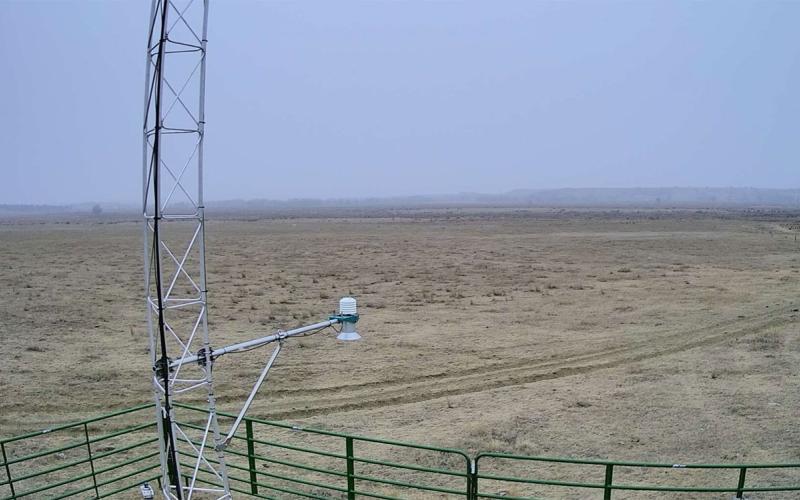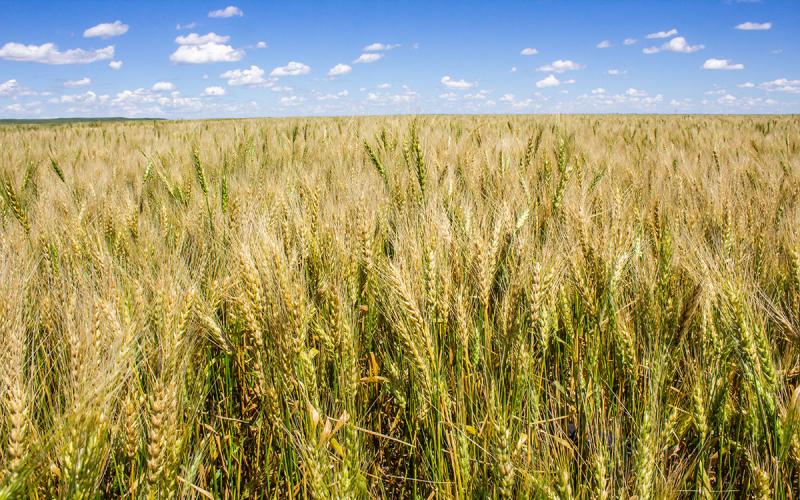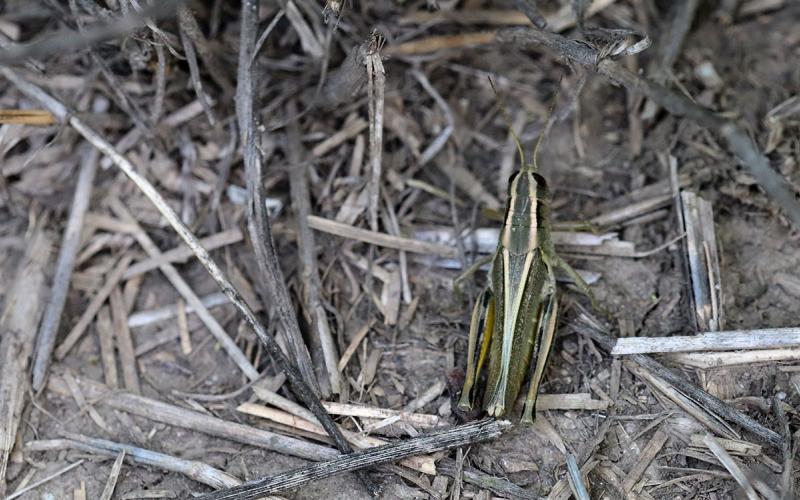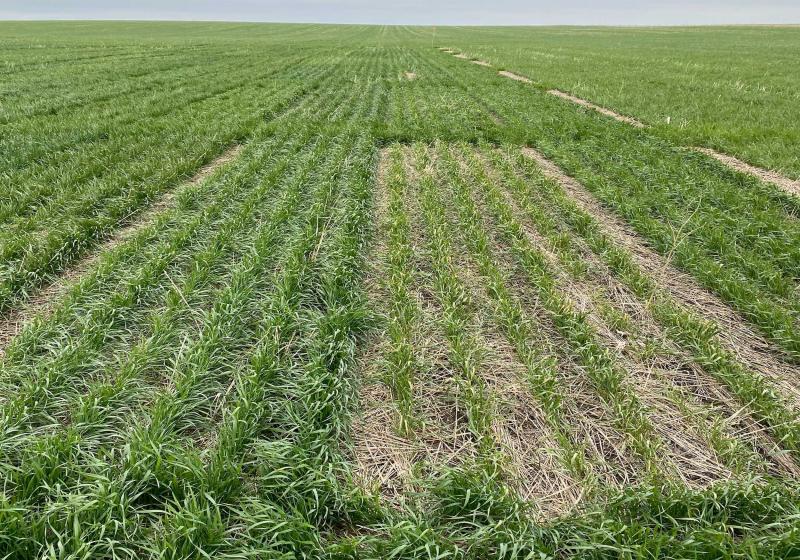
Originally Published: May 14, 2020
Written collaboratively by Jonathan Kleinjan, former SDSU Extension Agronomist; and Ruth Beck, former SDSU Extension Agronomy Field Specialist.
Low temperatures during the early morning hours of May 9–11, 2020 may have had detrimental effects on winter wheat in some areas of South Dakota. However, cooler spring temperatures that have slowed the winter wheat development this year may have actually been beneficial to S.D. producers, as later-maturing wheat is not as susceptible to injury from freezing temperatures.
Although growth stage or maturity of the wheat is probably the most important factor, there are other factors, which can also affect the impact of freezes on winter wheat. Length and severity of frost event, plant moisture content, elevation and topography and a thinner canopy can all increase susceptibility of winter wheat to low temperatures. In addition, some varieties may also be more susceptible to a freeze than others.
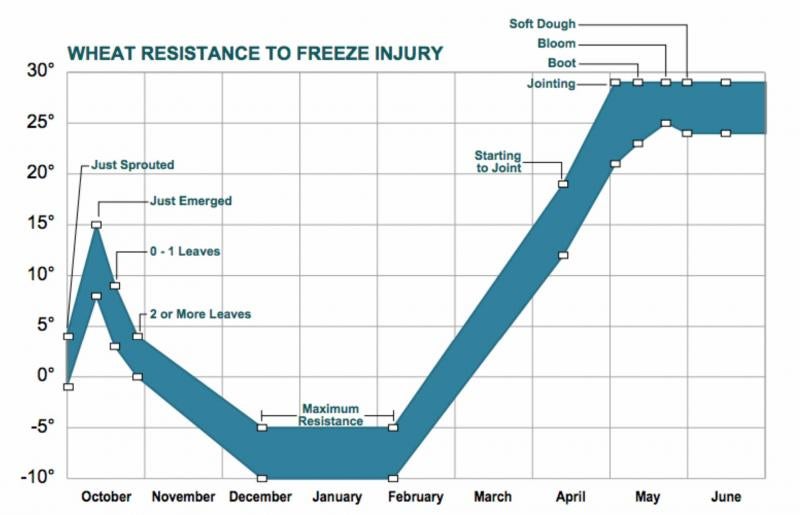
Winter wheat has steadily decreasing resistance to low temperatures after it begins rapid growth in the spring and advances toward maturity. Wheat is most sensitive to low temperatures during the reproductive period, which begins with pollination during the late boot stage. The temperatures required to cause injury throughout the winter wheat life cycle are shown in Figure 2. Both the temperature reached and the duration of the low temperature can be a factor in the amount of damage inflicted. Longer durations of freezing temperatures will cause more damage than a brief exposure. According to the National Ag Statistics service, none of the winter wheat in South Dakota was in the heading stage as of May 10, 2020.
Local weather stations may not accurately represent the temperature levels for all surrounding areas. If a producer suspects damaging temperatures may have occurred, it is best to scout individual fields, beginning with low-lying areas, as cold air tends to flow to these areas. Other than a dark green color or “water-soaked” appearance of the foliage, symptoms may not show up for a week or more, depending on the growing conditions following the event. Warmer temperatures stimulate the decomposition of injured plant tissue and accelerate symptom development. Easily observed symptoms such as dead leaf tissue and white awns do not usually cause significant yield reductions by themselves. They may, however, be indicative of a more severe problem. A summary of the temperatures that cause injury, along with expected symptoms and effect on grain yield, is shown in Table 1.
Early injury assessment may provide more management options if the damage appears severe, such as harvesting for hay or replanting to another crop. Many alternative crops remain viable options to South Dakota producers in late May, including corn, soybeans, or sorghum. It is important that growers weigh the production costs and expected returns of an alternative crop before destroying damaged winter wheat and replanting.
| Growth Stage |
|
|
Yield effect |
|---|---|---|---|
| Tillering |
|
Leaf chlorosis; burning of leaf tips; silage odor; blue cast to fields | Slight to moderate |
| Jointing |
|
Death of growing point; leaf yellowing or burning; lesions, splitting, or bending of lower stem; odor | Moderate to severe |
| Boot |
|
Floret sterility; head trapped in boot; damage to lower stem; leaf discoloration; odor | Moderate to severe |
| Heading |
|
Floret sterility; white awns or white heads; damage to lower stem; leaf discoloration | Severe |
| Flowering |
|
Floret sterility; white awns or white heads; damage to lower stem; leaf discoloration | Severe |
| Milk |
|
White awns or white heads; damage to lower stem; leaf discoloration; shrunken, roughened, or discolored kernels | Moderate to severe |
| Dough |
|
Shriveled, discolored kernels, poor germination | Slight to moderate |
Additional Resources
- Spring Freeze Injury to Kansas Wheat, Kansas State University Extension.
- Freeze Injury to Nebraska Wheat, University of Nebraska–Lincoln Extension.
